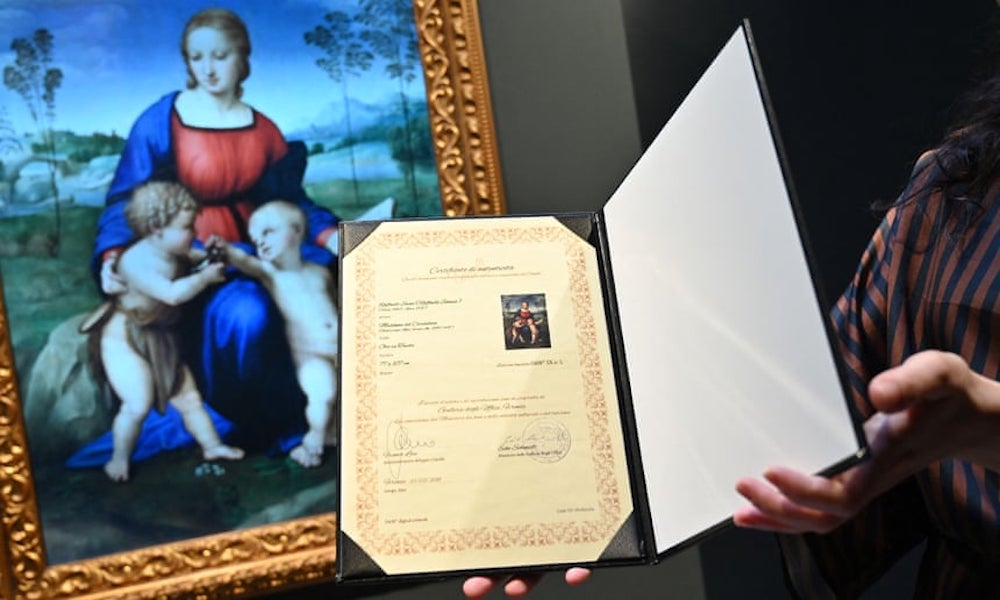Eternalising Art History: From Da Vinci to Modigliani | Unit London
Despite their sudden and enormous impact on the art world over recent months, the ins and outs of NFTs have passed me by. This show is the first of its type I’ve been to - in which the artworks are digital files, authenticated on the blockchain. I can’t face attempting to explain what the blockchain is, because I’ve read several Wikipedia pages and I’m still not sure I understand it myself!
Unit London worked with Italian “digital art platform” Cinello, and several of the nation’s biggest public collections, including the Uffizi in Florence and Milan’s Pinacoteca di Brera, for this exhibition. The show features same-size reproductions of six of the museums’ best-known works, from Francesco Hayez’s The Kiss to Raphael’s Madonna of the Goldfinch, as well as the pair of Da Vincis and Modigliani portrait promised by its title. Put together in a small room off Hanover Square, they’re an extremely impressive and iconic sight - from a distance.
Looked at close up, rather than bumps and cracks of worked paint, we see only a digital smoothness across the surface of the images. We realise it’s a backlit screen. Take a photo of the work and you’ll get loops and bands of screen distortion. You’d probably get a better idea of the original paintings by staying at home and browsing ultra high resolution images on Google Arts & Culture, but it’s still quite cool to see them all together, an impossible collection given some of the works are too fragile to travel.
 Image credit: Justin Tallis/AFP/Getty Images
Image credit: Justin Tallis/AFP/Getty Images
Each of the NFT versions of the source paintings are sold in an edition of nine. According to the gallery, buyers get a screen, a frame (handmade in Italy, of course, and a reproduction of the original), a Raspberry Pi with the image’s details, and the image itself. Plus a nice certificate to prove they own it - pictured above. The participating museums get 50% of the cash.
I guess it’s the promise of that cash that inspired the following fatuous quote from Alberto Rocca, which is emblazoned proudly on the gallery wall. He’s one of the chiefs at the Biblioteca Ambrosiana in Milan, where one of the original Leonardos resides. “Reproducing artworks in high definition … ensures the survival of the artworks in the unfortunate case they would be destroyed or lost.” The risks of the Raspberry Pi crashing, or the image file being lost through digital rot in the coming decades, are surely relatively higher than a flood, fire or meteorite wiping out central Milan.
(And what to do as an NFT buyer if you do have some kind of technical issue? Drop Cinello a line, of course! Will their tech support be “eternal”, too?)
Downstairs, we can view outline versions of each of the six works, projected on touchscreens this time. We’re encouraged to colour each of them in using the Pocket Paint app. This is either a next-level Jedi trick of commenting on and distancing us from the exhibition’s entire premise by making it all seem a bit sillier, or a comment on the difficulties of artwork reproductions. Or it’s an attempt to add to the spectacle.
I scribbled some pink lines on a version of Caravaggio’s Bowl of Fruit, having checked out the NFT version of the original upstairs, then stopped when a couple of other gallery goers entered the room and saw me. It all felt a bit embarrassing.
Eternalising Art History: From Da Vinci to Modigliani is at Unit London (London). 16 February - 19 March 2022